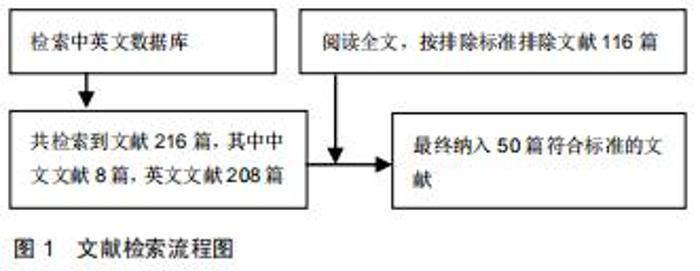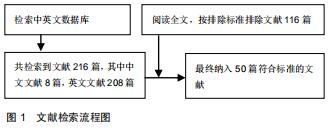Chinese Journal of Tissue Engineering Research ›› 2020, Vol. 24 ›› Issue (30): 4847-4853.doi: 10.3969/j.issn.2095-4344.2834
Previous Articles Next Articles
Design and application status of three-component total ankle replacement prosthesis
Wang Songbo1, Ling Ming2, Wang Jicheng1, Liu Shizhang2
- 1Xi’an Medical University, Xi’an 710068, Shaanxi Province, China; 2Orthopedic Hospital of Shaanxi Provincial People’s Hospital, Xi’an 710068, Shaanxi Province, China
-
Received:2020-03-03Revised:2020-03-07Accepted:2020-03-30Online:2020-10-28Published:2020-09-19 -
Contact:Liu Shizhang, MD, Chief physician, Orthopedic Hospital of Shaanxi Provincial People’s Hospital, Xi’an 710068, Shaanxi Province, China -
About author:Wang Songbo, Master candidate, Xi’an Medical University, Xi’an 710068, Shaanxi Province, China -
Supported by:the Key Research and Development Project of Shaanxi Province, No. 2018ZDXM-SF-057
CLC Number:
Cite this article
Wang Songbo, Ling Ming, Wang Jicheng, Liu Shizhang. Design and application status of three-component total ankle replacement prosthesis[J]. Chinese Journal of Tissue Engineering Research, 2020, 24(30): 4847-4853.
share this article
|
[1] GLAZEBROOK M, DANIELS T, YOUNGER A , et al. Comparison of health-related quality of life between patients with end-stage ankle and hip arthrosis. J Bone Joint Surg. 2008;90(3):499-505.
[2] GROSS CE, PALANCA AA, DEORIO JK. Design rationale for total ankle arthroplasty systems: an update. J Am Acad Orthop Surg. 2018; 26(10): 353-359.
[3] KOFOED H. Die Entwicklung der Sprunggelenksarthroplastik. Der Orthopäde. 1999; 28(9):804-811.
[4] VICKERSTAFF JA, MILES AW, CUNNINGHAM JL . A brief history of total ankle replacement and a review of the current status. Med Eng Phys. 2007;29(10):1056-1064.
[5] HENRICSON A, CARLSSON A. Survival analysis of the single- and double-coated STAR ankle up to 20 years: long-term follow-up of 324 cases from the Swedish ankle registry. Foot Ankle Int. 2015; 36(10):1156-1160.
[6] PRISSEL MA, ROUKIS TS. Incidence of revision after primary implantation of the Scandinavian Total Ankle Replacement system: a systematic review. Clin Podiatr Med Surg. 2013; 30(2): 237- 250.
[7] ZERAHN B, KOFOED H, BORGWARDT A. Increased bone mineral density adjacent to hydroxy- apatite- coated ankle arthroplasty. Foot Ankle Int.2000;21(4):285-289.
[8] KOFOED H. Scandinavian Total Ankle Replacement (STAR). Clin Orthop Relat Res. 2004; (424):73-79.
[9] CRACCHIOLO A, DEORIO JK. Design features of current total ankle replacements: implants and instrumentation. J Am Acad Orthop Surg.2008;16(9): 530 -540.
[10] BARG A, KNUPP M, HENNINGER HB,et al. Total ankle replacement using HINTEGRA, an unconstrained, three-component system: surgical technique and pitfalls. Foot Ankle Clin. 2012;17(4):607-635.
[11] DE LA FUENTE C, MARTINEZ-VALDES E, CRUZ-MONTECINOS C, et al. Changes in the ankle muscles co-activation pattern after 5 years following total ankle joint replacement. Clin Biomech (Bristol, Avon).2018;59:130-135.
[12] LEARDINI A, O'CONNOR JJ, CATANI F, et al. Mobility of the human ankle and the design of total ankle replacement. Clin Orthop Relat Res.2004;(424):39-46.
[13] PAPPAS M, BUECHEL FF, DEPALMA AF. Cylindrical total ankle joint replacement: surgical and biomechanical rationale. Clin Orthop Relat Res.1976;(118):82-92.
[14] SCRANTON PE,MCMASTER JG,KELLY E. Dynamic fibular function: a new concept.Clin Orthop Relat Res.1976;(118): 76-81.
[15] KOFOED H. Cylindrical cemented ankle arthroplasty: a prospective series with long-term follow-up.Foot Ankle Int. 1995;16(8):474-479.
[16] GITTINS J, MANN RA. The history of the STAR total ankle arthroplasty. Foot Ankle Clin. 2002;7(4):809-816.
[17] BURGE P, EVANS M. Effect of surface replacement arthroplasty on stability of the ankle. Foot Ankle.1986;7(1):10-17.
[18] BUECHEL F F, PAPPAS MJ, IORIO LJ. New Jersey low contact stress total ankle replacement: biomechanical rationale and review of 23 cementless cases. Foot Ankle. 1988;8(6):279-290.
[19] STAUFFER RN, CHAO EY, BREWSTER RC. Force and motion analysis of the normal, diseased, and prosthetic ankle joint. Clin Orthop Relat Res.1977;(127):189-196.
[20] LEARDINI A, O'CONNOR JJ, CATANI F, et al. A geometric model of the human ankle joint. J Biomech.1999;32(6): 585-591.
[21] LEARDINI A, O'CONNOR JJ, CATANI F, et al. Kinematics of the human ankle complex in passive flexion; a single degree of freedom system. J Biomech.1999,32(2):111-118.
[22] LEARDINI A, O'CONNOR JJ. A model for lever-arm length calculation of the flexor and extensor muscles at the ankle. Gait Posture.2002;15(3):220-229.
[23] LEARDINI A, O'CONNOR JJ, CATANI F, et al. The role of the passive structures in the mobility and stability of the human ankle joint: a literature review. Foot Ankle Int. 2000; 21(7):. 602-615.
[24] LEARDINI A, CATANI F, GIANNINI S, et al. Computer-assisted design of the sagittal shapes of a ligament-compatible total ankle replacement.Med Biol Eng Comput.2001;39(2):168-175.
[25] LEARDINI A, STAGNI R, O'CONNOR JJ. Mobility of the subtalar joint in the intact ankle complex. J Biomech.2001; 34(6):805-809.
[26] LEARDINI A, MOSCHELLA D. Dynamic simulation of the natural and replaced human ankle joint. Med Biol Eng Comput. 2002;40(2):193-199.
[27] 朱敏,唐康来.全踝关节置换假体设计的研究进展[J].中国矫形外科杂志,2019,27(24):2267-2271.
[28] HINTERMANN B, VALDERRABANO V, KNUPP M, et al. Die HINTEGRA- Sprunggelenkprothese: Kurz - und mittelfristige Erfahrungen. Orthopäde.2006;35(5):533-545.
[29] HINTERMANN B, VALDERRABANO V, DEREYMAEKER G, et al. The HINTEGRA ankle: rationale and short-term results of 122 consecutive ankles. Clin Orthop Relat Res. 2004;(424): 57-68.
[30] SMYTH A, FISHER J, SUÑER S, et al. Influence of kinematics on the wear of a total ankle replacement. J Biomech. 2017;53:105-110.
[31] MANN JA, MANN RA, HORTON E. STAR™ ankle: long-term results. Foot Ankle Int. 2011;32(5):473-484.
[32] CLOUGH T, BODO K, MAJEED H, et al. Survivorship and long-term outcome of a consecutive series of 200 Scandinavian Total Ankle Replacement (STAR) implants. Bone Joint J.2019;101- B(1):47-54.
[33] 林清,杜斌,魏攀登,等. STAR非限制活动型全踝假体的研究:现状及应用分析[J].中国组织工程研究,2014,18(9):1410-1415.
[34] NAJEFI A, MALHOTRA K, CHAN O, et al. The Bologna-Oxford ankle replacement: a case series of clinical and radiological outcomes. Int Orthop.2019;43(10): 2333-2339. [35] KOIVU H, KOHONEN I, MATTILA K, et al. Long-term Results of Scandinavian Total Ankle Replacement. Foot Ankle Int. 2017;38(7):723-731.
[36] LOEWY EM, SANDERS TH, WALLING AK. Intermediate-term Experience With the STAR Total Ankle in the United States. Foot Ankle Int.2019;40(3):268-275.
[37] 吴剑,刘艳西,郑勇,等.人工全踝关节置换假体类型及其评价系统[J].中国组织工程研究与临床康复,2011,15(30):5627-5630.
[38] KITAOKA HB, ALEXANDER IJ, ADELAAR RS, et al. Clinical rating systems for the ankle-hindfoot, midfoot, hallux, and lesser toes. Foot Ankle Int .1994;15(7): 349-353.
[39] DELEU PA, DEVOS BEVERNAGE B, GOMBAULT V,et al. Intermediate-term Results of Mobile-bearing Total Ankle Replacement. Foot Ankle Int. 2015;36(5):518-530.
[40] LEFRANCOIS T, YOUNGER A, WING K, et al. A prospective study of four total ankle arthroplasty implants by non-designer investigators. J Bone Joint Surg Am.2017; 99(4):342-348.
[41] YANG HY, WANG SH, LEE KB. The hintegra total ankle arthroplasty: functional outcomes and implant survivorship in 210 osteoarthritic ankles at a mean of 6.4 years.Bone Joint J. 2019; 101-B(6):695-701.
[42] GIANNINI S, ROMAGNOLI M, O'CONNOR JJ, et al. Total ankle replacement compatible with ligament function produces mobility, good clinical scores, and low complication rates: an early clinical assessment.Clin Orthop Relat Res. 2010;468(10):2746-2753.
[43] GIANNINI S, ROMAGNOLI M, BARBADORO P, et al. Results at a minimum follow-up of 5 years of a ligaments-compatible total ankle replacement design.Foot Ankle Surg.2017;23(2): 116-121.
[44] DANIELS TR, MAYICH DJ, PENNER MJ. Intermediate to long-term outcomes of total ankle replacement with the scandinavian total ankle replacement (STAR). J Bone Joint Surg Am.2015;97(11):895-903.
[45] BIANCHI A, MARTINELLI N, SARTORELLI E, et al. The Bologna-Oxford total ankle replacement: a mid-term follow-up study. Bone Joint Surgery Br. 2012;94(6): 793-798.
[46] LEE GW, SEON JK, KIM NS, et al. Comparison of intermediate-term outcomes of total ankle arthroplasty in patients younger and older than 55 years. Foot Ankle Int. 2019; 40(7): 762-768.
[47] LEE GW, SANTOSO A, LEE KB. Comparison of intermediate-term outcomes of total ankle arthroplasty in primary and ligamentous post-traumatic osteoarthritis. Foot Ankle Int. 2019; 40(11):1273-1281.
[48] LEE GW, WANG SH, LEE KB. Comparison of intermediate to long-term outcomes of total ankle arthroplasty in ankles with preoperative varus, valgus, and neutral alignment. J Bone Joint Surg Am. 2018;100(10):835-842.
[49] ESCUDERO M I, LE V, BARAHONA M, et al. Total ankle arthroplasty survival and risk factors for failure. Foot Ankle Int. 2019;40(9):997-1006. [50] KUO CC, LU HL, LEARDINI A, et al.Three-dimensional computer graphics-based ankle morphometry with computerized tomography for total ankle replacement design and positioning. Clin Anat. 2014;27(4): 659-668. |
| [1] | Xu Feng, Kang Hui, Wei Tanjun, Xi Jintao. Biomechanical analysis of different fixation methods of pedicle screws for thoracolumbar fracture [J]. Chinese Journal of Tissue Engineering Research, 2021, 25(9): 1313-1317. |
| [2] | Xiao Guoqing, Liu Xuanze, Yan Yuhao, Zhong Xihong. Influencing factors of knee flexion limitation after total knee arthroplasty with posterior stabilized prostheses [J]. Chinese Journal of Tissue Engineering Research, 2021, 25(9): 1362-1367. |
| [3] | Zhang Chong, Liu Zhiang, Yao Shuaihui, Gao Junsheng, Jiang Yan, Zhang Lu. Safety and effectiveness of topical application of tranexamic acid to reduce drainage of elderly femoral neck fractures after total hip arthroplasty [J]. Chinese Journal of Tissue Engineering Research, 2021, 25(9): 1381-1386. |
| [4] | Chen Xinmin, Li Wenbiao, Xiong Kaikai, Xiong Xiaoyan, Zheng Liqin, Li Musheng, Zheng Yongze, Lin Ziling. Type A3.3 femoral intertrochanteric fracture with augmented proximal femoral nail anti-rotation in the elderly: finite element analysis of the optimal amount of bone cement [J]. Chinese Journal of Tissue Engineering Research, 2021, 25(9): 1404-1409. |
| [5] | Yuan Jiawei, Zhang Haitao, Jie Ke, Cao Houran, Zeng Yirong. Underlying targets and mechanism of Taohong Siwu Decoction in prosthetic joint infection on network pharmacology [J]. Chinese Journal of Tissue Engineering Research, 2021, 25(9): 1428-1433. |
| [6] | Zhou Jihui, Li Xinzhi, Zhou You, Huang Wei, Chen Wenyao. Multiple problems in the selection of implants for patellar fracture [J]. Chinese Journal of Tissue Engineering Research, 2021, 25(9): 1440-1445. |
| [7] | Wang Debin, Bi Zhenggang. Related problems in anatomy mechanics, injury characteristics, fixed repair and three-dimensional technology application for olecranon fracture-dislocations [J]. Chinese Journal of Tissue Engineering Research, 2021, 25(9): 1446-1451. |
| [8] | Chen Junming, Yue Chen, He Peilin, Zhang Juntao, Sun Moyuan, Liu Youwen. Hip arthroplasty versus proximal femoral nail antirotation for intertrochanteric fractures in older adults: a meta-analysis [J]. Chinese Journal of Tissue Engineering Research, 2021, 25(9): 1452-1457. |
| [9] | Wang Zhengdong, Huang Na, Chen Jingxian, Zheng Zuobing, Hu Xinyu, Li Mei, Su Xiao, Su Xuesen, Yan Nan. Inhibitory effects of sodium butyrate on microglial activation and expression of inflammatory factors induced by fluorosis [J]. Chinese Journal of Tissue Engineering Research, 2021, 25(7): 1075-1080. |
| [10] | Jiao Hui, Zhang Yining, Song Yuqing, Lin Yu, Wang Xiuli. Advances in research and application of breast cancer organoids [J]. Chinese Journal of Tissue Engineering Research, 2021, 25(7): 1122-1128. |
| [11] | Zhu Xuefen, Huang Cheng, Ding Jian, Dai Yongping, Liu Yuanbing, Le Lixiang, Wang Liangliang, Yang Jiandong. Mechanism of bone marrow mesenchymal stem cells differentiation into functional neurons induced by glial cell line derived neurotrophic factor [J]. Chinese Journal of Tissue Engineering Research, 2021, 25(7): 1019-1025. |
| [12] | Song Chengjie, Chang Hengrui, Shi Mingxin, Meng Xianzhong. Research progress in biomechanical stability of lateral lumbar interbody fusion [J]. Chinese Journal of Tissue Engineering Research, 2021, 25(6): 923-928. |
| [13] | Huang Dengcheng, Wang Zhike, Cao Xuewei. Intravenous, topical tranexamic acid alone or their combination in total knee arthroplasty: a meta-analysis of randomized controlled trials [J]. Chinese Journal of Tissue Engineering Research, 2021, 25(6): 948-956. |
| [14] | Zhan Fangbiao, Cheng Jun, Zou Xinsen, Long Jie, Xie Lizhong, Deng Qianrong. Intraoperative intravenous application of tranexamic acid reduces perioperative bleeding in multilevel posterior spinal surgery: a meta-analysis [J]. Chinese Journal of Tissue Engineering Research, 2021, 25(6): 977-984. |
| [15] | Xu Yulin, Shen Shi, Zhuo Naiqiang, Yang Huilin, Yang Chao, Li Yang, Zhao Heng, Zhao Lu. Biomechanical comparison of three different plate fixation methods for acetabular posterior column fractures in standing and sitting positions [J]. Chinese Journal of Tissue Engineering Research, 2021, 25(6): 826-830. |
| Viewed | ||||||
|
Full text |
|
|||||
|
Abstract |
|
|||||

